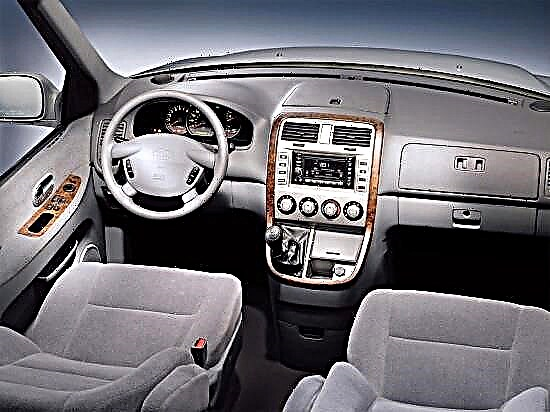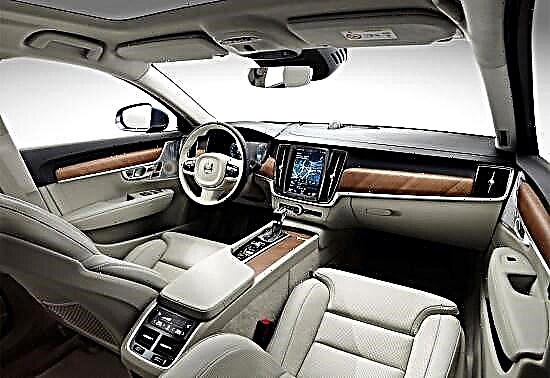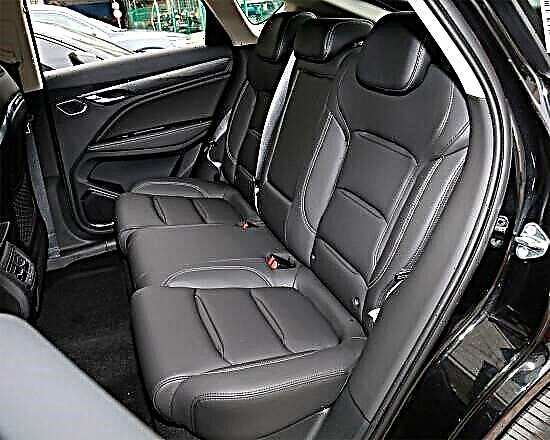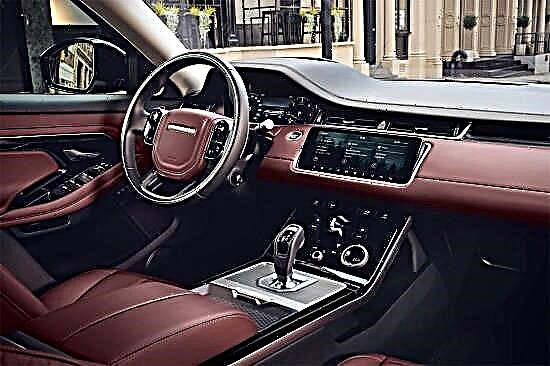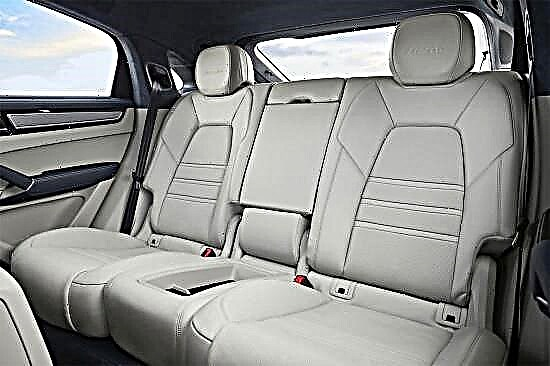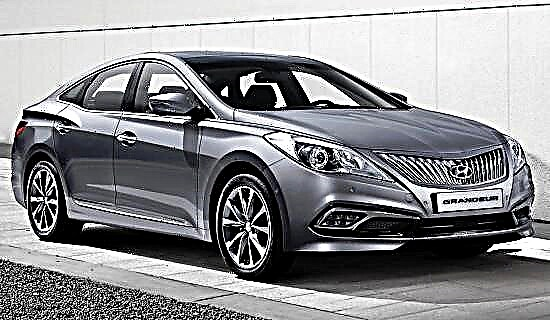Ratings of cars and auto products
Reviews, comparisons & tips for motorists
When considering converting your car to run on gas, the key question is: How much money can you save? However, there are other criteria to consider, including certain disadvantages. Obviously, no solution only has advantages, there are also disadvantages.
The main advantages of HBO
Every aspect of life has its own merits and demerits. If you decide to put money in the bank, you agree to "freeze" it for a certain period of time. If you want to make your life less dangerous for the environment, you also need to make some sacrifices - you separate the trash, save energy by turning off unused appliances and replacing ordinary light bulbs with energy-efficient ones. Driving your own car is also challenging - you spend money on fuel and maintenance, standing in traffic jams, and taking responsibility for your participation in traffic.
When you install HBO, you are probably doing it to save money and for the environment, but in order to achieve your goals, you must first invest in HBO. Yes, you will pay more for MOT checks on your vehicle, and yes, you will need to replace your spark plugs a little more often, but you will save enough to cover that and more. In turn, you may be allowed to enter the city center while others may not, although sometimes you may find yourself in an underground car park. A car that is regularly looked after will not let you down and will be more pleasant to drive thanks to a quieter and more flexible engine.
Liquefied gas will not fix a broken car or make you money, it will only save you money. But nevertheless, it has enough advantages to convince more and more drivers around the world every year. So many people can't be wrong, can they? Let's consider the pros and cons of HBO in more detail.
Pros:
- Economy is, of course, the main criterion in favor of converting a car for LPG. The more you drive, the more you save - simple and straightforward! The cost of gas is an order of magnitude lower in comparison with gasoline.
- Environmental protection - Gas vehicles emit 15-20% less carbon dioxide (CO2) than their gasoline and diesel counterparts, and practically do not emit nitrogen oxides (NOx) or particulate matter (PM). Gas is an environmentally friendly fuel. Some countries recognize that LPG is green and are introducing incentives for drivers who use it: road tax incentives, lower car insurance premiums, free parking in city centers, or a stable excise tax policy. Also, accusations of traffic jams are often dropped from gas-powered vehicles (as with electric vehicles). Even when your government doesn't give you anything in return, you can still feel better because your car is not as damaging to the environment as the average diesel.
- Liquefied gas can also be easily used in a gasoline engine. Similar to a gasoline engine, when the LPG connection is made and fed to the inlet of the carburetor, LPG vapors (instead of petrol droplets) are mixed with air and then sent to the combustion chamber where an ignition process occurs as in the gasoline version. A similar mechanism is also used in the MPFI (Fuel Injection System) versions. Thus, a gasoline engine can easily be converted to LPG, since the combustion process is exactly the same.
- Extra Range - Any automotive gas system is a supplement to the vehicle, while gasoline remains the primary fuel. Since it is possible to use two types of fuel at will, the distance that you can cover after one refill is significantly increased, which brings certain benefits. Running out of car gas in the middle is not a problem because you can always use some of the gas you have (if you don't) to get to the nearest gas station. However, make sure you regularly fill up with LPG - why use gasoline and pay twice as much?
- Gas engine is quieter and more flexible - LPG has a high octane number (around 110), which means the engine runs smoother and accelerates more easily at low revs. This is especially useful in city driving, where there are many starts and stops, and noise itself is a form of pollution.
- The gas engine "lives" longer - the gas is injected into the combustion chambers in an optimal form, that is, in the form of steam, which is beneficial for a modern engine. Engineers have tried for years to get gasoline to enter cylinders in this shape, but with autogas this is a natural process (its physical characteristics guarantee it). The combustion process is also smoother and more efficient, plus the oil film does not cover the cylinder walls with fuel droplets.
In recent years, Russia has seen a significant increase in the use of 4th generation HBO in the automotive space. Both in manufacturer-equipped models and in kits, liquefied gas is currently used very widely as a vehicle fuel. The key factors driving the increased use of LPG in cars have been the drive to reduce fuel costs, environmental considerations, and the fundamental recognition of LPG as a good alternative to gasoline and diesel.
In the process of refining oil, several different components are extracted, from almost solid (tar) to liquid (gasoline) and gaseous vapors. In this case, the liquefied gas is a mixture of these components. It includes mostly propane and butane, and is loaded with some kind of odorant that can be used to detect leaks. When this gas is stored, it contracts, which turns it into a liquid. Therefore, it is called liquefied.
The operation of an engine on liquefied gas is similar to the operation of a gasoline engine. In a gasoline engine, a car's carburetor creates a mixture of droplets of gasoline and air, which is then fed into the engine's intake manifold. A spark is then generated, causing a controlled explosion that propels the engine.
Disadvantages of HBO
Compression ratio is an important factor in engine performance. In a conventional gasoline engine, the pressure of the fuel / air mixture is highest at the end of the compression stroke, which is further increased by engine heat. As a result, providing a spark results in rapid ignition. The high calorific value and specific energy per unit volume of the mixture lead to powerful combustion, but sufficient pressure is required to ensure that there is sufficient fuel in this unit of volume.
If the engine is driven by gasoline, drops of gasoline appear. However, in the LPG mode, the fuel component of the mixture is released in the gaseous stage. In this case, pressure becomes important to ensure a sufficient amount of fuel in the mixture.It is achieved at the expense of temperature: a higher fuel temperature is desirable, the pressure rises and, thus, a sufficient amount of gas is provided per mixture volume.
Thus, LPG requires engine warm-up to ensure that the air / fuel mixture is heated sufficiently to initiate combustion. In fact, this is the reason that in most cars equipped with a set of gas equipment, the engine runs in gasoline mode for some time, and then switches to LPG mode when it becomes warm enough. As for other advantages and disadvantages of HBO, it is worth highlighting the following.
Other cons:
- Additional maintenance - as we have already said, gas on a car is an addition to the car, therefore, like the entire vehicle, it requires certain periodic checks and maintenance (usually once every 10 thousand km or once a year).
- Additional maintenance costs - each gas supply system must be serviced annually, like the entire vehicle. This is done during a regular inspection, but at an additional cost. New gasoline and diesel vehicles do not need to be inspected until they are 3 years old (and even so, a second inspection is not required until the vehicle is 5 years old), but if you convert a new car or buy a factory one, it will need to be inspected. yearly.
- A small number of filling stations - compared to gasoline and diesel.
- Research on gasoline and diesel versions of engines is more advanced than on LPG. For example, detailed analysis of combustion flame development, driving modes, different mixture conditions, etc. is available for the combustion process of gasoline and diesel engines, while the same is limitedly available for LPG.
- Mandatory registration of equipment and inspection of the cylinder - you will also have to spend money on the legalization of HBO.
- Reducing the useful volume in the trunk and making the weight of the car heavier - part of the tank for liquefied gas takes it up, but much depends on the type of container itself. If you transfer a car to LPG with a cylinder-shaped cylinder, some cargo space will be lost forever, because it is installed inside the trunk and fixed there forever. Toroidal tanks are somewhat of a better solution because they fit in a spare wheel space under the boot floor. However, they are usually smaller than cylindrical tanks that can be used on the same machine. You also need to fit a spare tire, but luckily it can be stowed in the trunk and used as needed.
- Loss of engine power and increased gas consumption - LPG is slightly more demanding than gasoline because it is more difficult to ignite and burn at higher temperatures. As a result, it is imperative that the intake and ignition systems are properly maintained and remain fully functional at all times. Some cars and engines require replacement of spark plugs, ignition cables, and air filters more often than others. Obviously, as long as the driver takes proper care of his car and replaces all worn parts without delay, little will change after the car is refitted.
Special requirements for the operation and storage of a car on gas are also established for some areas and parking lots. Liquefied gas vehicles sometimes cannot be parked in underground car parks - the gas is heavier than air, which means it settles at the lowest points on earth. For this reason, garages with viewing holes should be avoided and access to multi-storey car parks may be restricted. This is due to the danger when operating a car on gas.
Is it worth putting gas equipment on the car
Should I put HBO? Compared to a gasoline engine, a car equipped with LPG adds a number of details. The main components of the LPG kit are cylinder, evaporator, solenoid valves, switch, pipe and hose connections. The evaporator is the heart of the LPG kit. This device dramatically reduces the pressure of LPG from its container, converting the liquid into gas, which is then fed directly to the carburetor.
Solenoid valves are two valves that regulate the flow of gas or petrol. These are electromagnetic devices that, accordingly, stop the flow of gasoline when the car is running on LPG, and vice versa, stop the flow of LPG when gasoline is used. It also stops the flow of LPG when the engine is stopped. The cylinder is a protected device that keeps the compressed gas in liquid form. The switch allows you to switch from petrol to LPG and vice versa.
Is it worth transferring a car to LPG? The user will generally be tempted to use LPG in order to lower the cost of running their vehicle. Compared to the reduced cost per kilometer, there is investment and service. Consider investments in the operation of gas equipment and their benefits.
Investments
When the user decides to implement the LPG kit in his car, the cost of the conversion kit will be from 15 to 18 thousand rubles. Even in the case of using liquefied gas produced by the company, we expect a more significant increase in prices compared to the similar petrol version. The investment is a one-time investment, after which the user can take advantage of the HBO.
Mileage and cost per km
To estimate the cost of driving a car on gas, two factors are important. First of all, the cost of a unit of liquefied gas, and then the mileage of the car itself, equipped with such a system. Please note that LPG is measured per kilogram as it will have different amounts of actual fuel depending on the pressure applied. The cost per kg of liquefied gas varies depending on the region.
Maintenance
LPG vehicle maintenance is similar in many respects to the petrol option, as most of the components are the same. Of course, special care must be taken to keep the cylinder, valves and pipes in very good condition. As a result, maintenance of an LPG car will always be more expensive than a gasoline car.
HBO second generation
When using the LPG kit, there are such troubles as problems with starting and jerking. After prolonged use, the rings can wear out, which quickly leads to a shift in the pressure of the injected gas. The remedy is to replace the rings, which would mean a major overhaul.
The main thing to remember for the owners of a car with an LPG system is to provide it for service at regular intervals, which will avoid overhauling the kit for liquefied gas. Nevertheless, we can assume that the maintenance of a car with an installed LPG system will cost about 5,000 rubles a year more.
Evaluation
The useful life of the LPG kit is about 4 years. Therefore, the estimated total costs should be about 15,000 rubles per set, plus 4 times 5,000 rubles for service - only 35,000 rubles. This means that you need to drive at least 35,000 km. over four years to recover costs, which is about 14,000 km per year.Hence, from an economic point of view, it can be argued that LPG is beneficial for drivers driving more than 14,000 km. in year.
Safety and precautions
In the past, safety concerns have been a major deterrent to people from using HBO. Let's take a look at the HBO safety factor. Cars equipped with LPG, whether factory or custom-installed, explode periodically.
Nevertheless, when checking, it was always shown that these accidents occurred with domestic gas equipment, and not with factory settings. Obviously, it is very dangerous to use internal LPG cylinders for passenger cars - it is not only illegal, but can also be fatal. At the same time, it is obvious that when driving a properly equipped car, there are no safety problems as such.
However, the main thing to observe when using LPG is leakage. The source of the leak can be a filter installed above the cylinder, an electromagnetic switch and a pipeline. Typically, piping from the rear tank is routed through side panels inside the passenger compartment to avoid pipe damage from potholes, stones, etc. Any regular maintenance will include a complete inspection of these components for leaks.
Please note that HBO comes with an added scent. Therefore, as a precaution, in case of any odor, shut off the engine immediately to stop the flow of LPG and contact the authorities to remedy the problem immediately.
Driving experience
Driving a car equipped with a LPG kit, although very similar to a gasoline car, comes with some interesting features and a certain procedure must be followed for best use.
Start the car with gasoline first and let it run for a few minutes to warm up the engine. Then turn off the petrol switch to turn off the petrol supply. The engine will now run for a few minutes with the gasoline left in the carburetor. At this point, you can turn off the engine and turn it back on with LPG and start the engine.
When installing LPG, engine performance will not be as comfortable as that of gasoline. You may feel a lack of power and traction. However, the engine becomes smoother as it warms up completely. The estimated power loss in the LPG engine is about 10%, which results in a 3% decrease in top speed and a decrease in torque.
An important point to keep in mind is that if you are going to travel long distances, make sure the LPG tank is full and be sure to find out where the next gas station is on your route. In addition, it would be good to keep an adequate supply of gasoline for emergency use. However, in reality, LPG is now abundant in cities, and even in rural areas it is regularly available. This is also due to the sheer number of LPG taxis.


